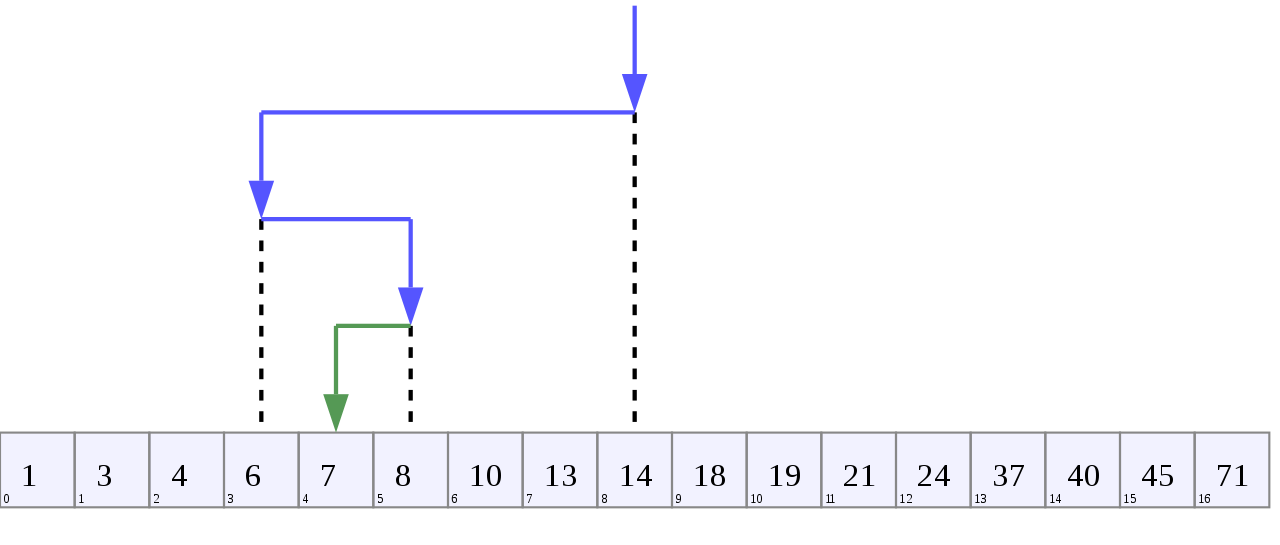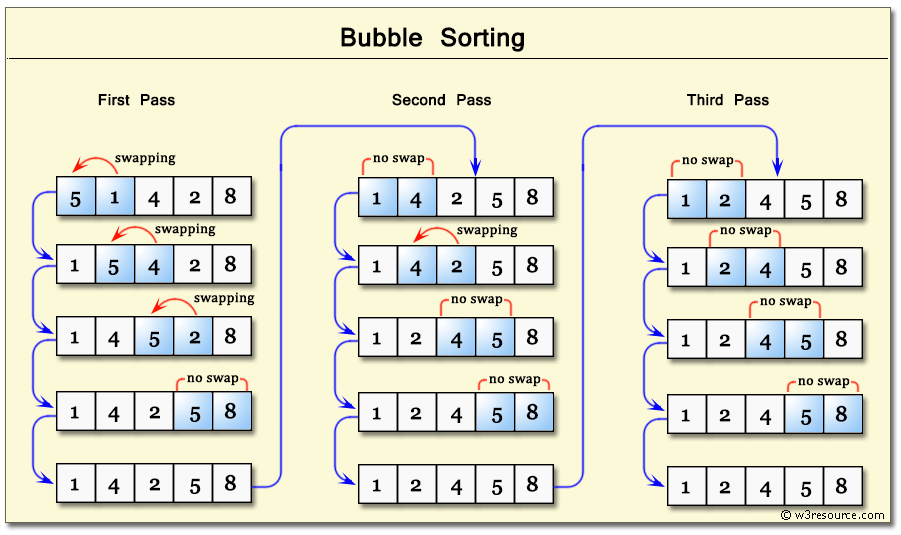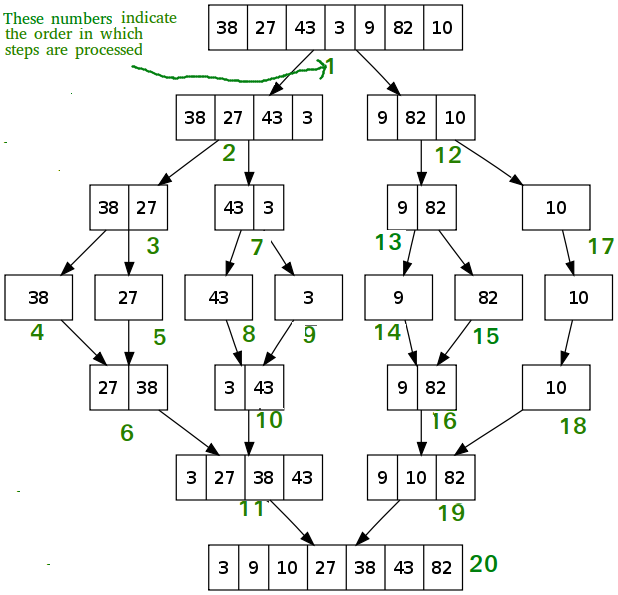CS 2120: Topic 10¶

Videos for this week:¶
Algorithms¶
What is an algorithm?
Algorithm = a set of instructions for performing a specific task; a “recipe” for solving problems
Python allows you to use any number of algorithms (i.e. list.sort()) without having to know about any of their implementation details
this is a good thing when we want to just get things done
But, it’s also important to have a basic understanding of them
this can help you to become a better programmer, abstract thinker, and problem solver — see
computational thinking
We will cover three algorithms today:
binary search, bubble sort, and merge sort.. one for each of the following categories:
- Searching
- Sorting
- Recursion
Warning
In this module we are moving away from using code and towards understanding how it works. As such, don’t expect to look at these algorithms and immediately understand how they work. They require careful study to make sense of. The best tool you have for understanding how they work is to carefully trace their operation, step by step. Trying to understand complex algorithms “all in one go” is a recipe for frustration. Take your time, and step through the algorithm (with pen and paper) on a small input to get a feel for what it’s doing.
Binary search¶
Let’s take a look at binary search:
def binary_search(list,val,left,right):
while left <= right:
midpoint = (left+right)/2
if list[midpoint] > val:
right = midpoint - 1
elif list[midpoint] < val:
left = midpoint + 1
else:
return midpoint
return -1
On average, how many iterations through the loop does this function make?

How it works
You give me a sorted list (
list), a value to search for (val), the left index (left) and right index (right)I cut the list in half by taking the midpoint
If
valis left of midpoint,valmust be on the left half of the list, so re-assignrightto equal midpoint - 1If
valis right of midpoint,valmust be on the right half of the list, so re-assignleftto equal midpoint + 1If
valis at the midpoint, we’re doneKeep splitting the list and changing
left,right, and midpoint until we find our valueIt’s called “binary search” because we are splitting the list into 2 pieces for each iteration.
Bubble Sort¶
Let’s take a look at bubble sort:
def bubble_sort(list):
swap = True
while swap:
swap = False
for i in range(len(list)-1):
if list[i] > list[i+1]:
tmp = list[i]
list[i]=list[i+1]
list[i+1]=tmp
swap = True
return list

How it works
You give me a list called
listI scan through the list, looking at adjacent pairs of values.
If I see a pair that is “out of order” (e.g.,
[17, 9]), I swap the two values to be in order ([9,17]).I keep doing that until the list is sorted.
It’s called “bubble sort” because the smaller values seem to “bubble up to the top”.
Is bubble sort the best?¶
Definitely not… there are many better sorting algorithms
With recursion, we can do
Mergesort(better than bubble sort)
Recursion¶
If a function calls itself, it is said to be a recursive function.
Writing a simple recursive function¶
Every recursive function needs two things:
A base case that terminates the recursion.
A recursive step that calls the function again, but with a modified (probably smaller) parameter
Activity
Write a function fact(n) which computes the factorial
of n using recursion (no loops allowed!).
Identify the base case and recursive step.
Mergesort¶
Remember this
There are many algorithms to solve any given problem.
First, we need to implement a
mergeoperation in Python:def merge(left, right): merged = [] l=0 r=0 while l < len(left) and r < len(right): if left[l] <= right[r]: merged.append(left[l]) l = l + 1 else: merged.append(right[r]) r = r + 1 if l < len(left): merged.extend(left[l:]) else: merged.extend(right[r:]) return merged
With merge defined, let’s take a look at merge sort:
def mergesort(list): if len(list) <= 1: return list else: midpoint = int( len(list) / 2 ) left = mergesort(list[:midpoint]) right = mergesort(list[midpoint:]) return merge(left,right)

How it works
You give me a list (
list) withnelementsI divide
listintonsublists, each having 1 element.The sublists are now already sorted! (Any list with only one element is automatically sorted)
I now begin merging sublists, to produce bigger (but still sorted) sublists:
I compare the first element in one sublist to the first in the other
Whichever is smaller goes into the merged list
I now compare the second element in that list to the first element in the other list
… and so on…
I keep going until there is nothing left to merge (there’s only one big, sorted, list)
For next class¶
If you’ve made it this far, congrats! Check out http://www.sorting-algorithms.com/ and see how bubble sort and merge sort compare to other popular sorting algorithms
Work on Assignment 3 and Assignment 4